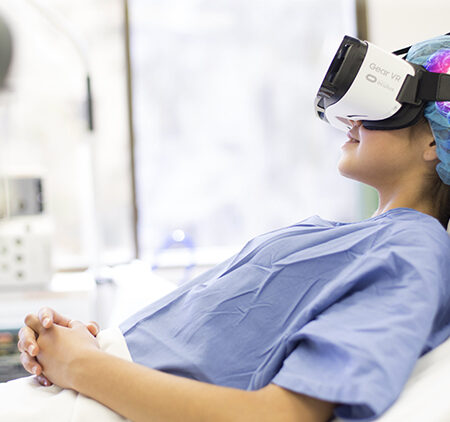(Image Credit: Cognihab)
Mental health treatment has traditionally relied on methods like talk therapy, medication, and cognitive-behavioral therapy (CBT). While these approaches have proven effective for many, the field is constantly evolving, and new technologies are pushing the boundaries of how we understand and treat mental health conditions. One of the most promising developments in recent years is virtual reality (VR) therapy. This cutting-edge approach is not just a futuristic concept—it’s already being used to treat a variety of mental health issues, offering new hope for those struggling with anxiety, PTSD, and other conditions. But how exactly does VR therapy work, and what makes it so revolutionary?
Virtual reality therapy involves using VR headsets to immerse patients in simulated environments where they can confront and work through their fears, anxieties, or traumas in a controlled and safe setting. Unlike traditional therapy, which relies on imagination or verbal recounting of experiences, VR therapy allows patients to experience situations that trigger their symptoms fully immersively. This can make the therapeutic process more vivid, engaging, and compelling.
For now the primary application of VR therapy is in the treatment of anxiety disorders, including phobias and PTSD. For example, a person with a fear of flying can use VR to gradually and safely confront this fear by virtually experiencing different aspects of flying, such as boarding a plane, takeoff, and turbulence. By repeatedly exposing themselves to these scenarios in a controlled environment, they desensitize themselves to the fear and reduce their anxiety over time. Similarly, VR has been used to help veterans with PTSD by recreating combat scenarios, allowing them to process and manage traumatic memories in a therapeutic setting.
Another promising area for VR therapy is in the treatment of social anxiety. Individuals who struggle with social interactions can use VR to practice speaking in public, navigating social situations, or even engaging in job interviews. The immersive nature of VR allows patients to confront their anxieties in a realistic but safe environment, which can build confidence and reduce avoidance behaviors.
But VR therapy isn’t just about exposure therapy. It also enhances mindfulness practices, helping individuals manage stress and improve their mental well-being. In some situations VR transports users to calming, serene environments, such as a beach at sunset or a tranquil forest, where they can engage in guided meditation or relaxation exercises. This sensory-rich experience can make mindfulness practices more accessible and effective, particularly for those who struggle to focus or relax in traditional settings.
The use of VR in therapy also has the potential to make mental health treatment more accessible. Individuals living in remote areas, who have mobility issues, or who find it challenging to attend in-person therapy sessions, VR offers a way to receive treatment from their home. The more VR technology improves and becomes even more affordable, it could play a crucial role in addressing the barriers that prevent many people from accessing mental health care.
Like any emerging technology, VR therapy comes with challenges. There are concerns about the potential for over-reliance on technology, the need for extensive training for therapists, and the risk of adverse effects, such as motion sickness or discomfort during VR sessions. While early studies on VR therapy are promising, more research is needed to fully understand its long-term efficacy and potential risks.
Despite these challenges, VR therapy’s potential to revolutionize mental health treatment is undeniable. The adoption of VR tech represents a shift toward more personalized, immersive, and accessible care, paving the way for a future where mental health treatment is as dynamic and adaptable as the individuals it seeks to help.
VR therapy is opening up new frontiers in mental health care, offering immersive, effective, and accessible treatment options for a range of conditions. While there are still hurdles to overcome, integrating virtual reality into therapy represents a significant step forward in how we approach mental health.


